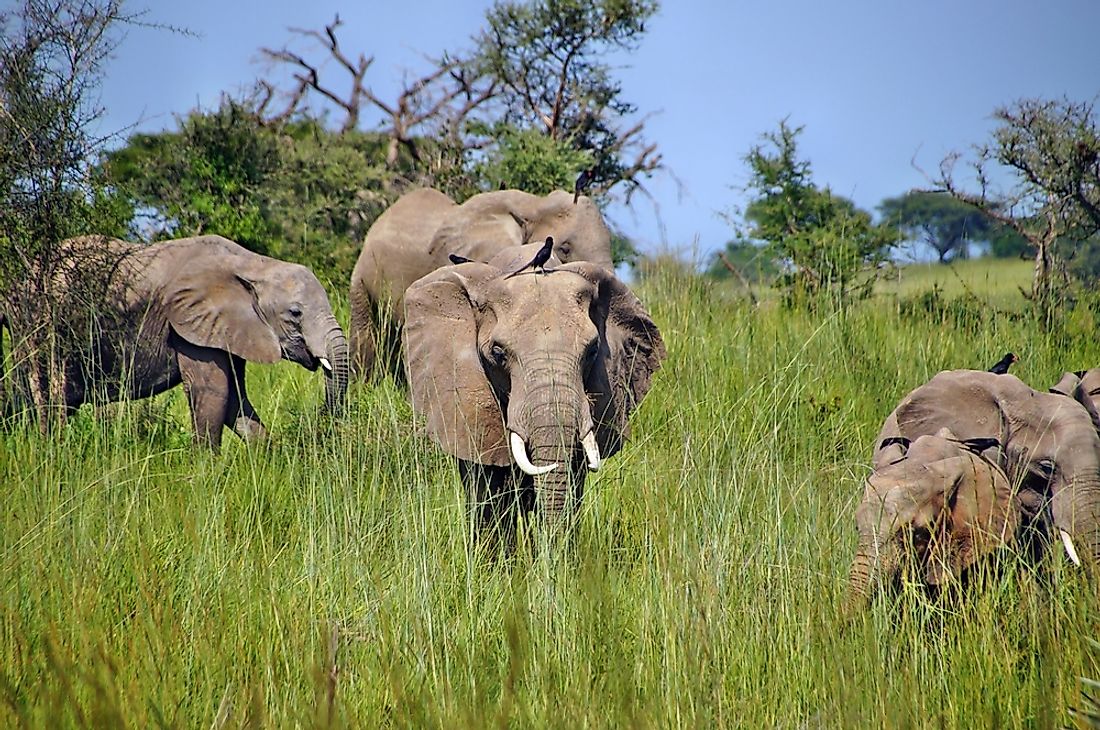What Are The Characteristics Of A Tropical Savanna Type Of Climate?

The tropical savanna climate is also called the tropical wet and dry climate. It is the climate experienced in savanna or tropical grassland regions of the world. These places are located near the equator, and they lie between the Southern and the Northern Tropics. The climate dominates many parts of the African continent, the northern region of South America, and parts of Asia such as India. The tropical savanna climate has alternating dry and wet seasons, hence its name. It shares some similar characteristics with the tropical monsoon climate, but it receives less annual rainfall as compared to the tropical monsoon climate. In the Köppen classification, the climate is designated as Aw or As.
Characteristics of the Tropical Savanna Climate
Temperature
Tropical savanna climates are relatively hot since they lie within the tropical latitudes. Throughout the year, mean monthly temperatures soar above 64 °F (18 °C). The dry season in savanna grasslands is cooler than the wet season by a few degrees. During the wet season, temperatures are between 78 to 86 °F (25 - 30 °C). In the dry period of the year, the temperature ranges between 68 to 78 °F (20 - 25° C). Temperatures are higher during the day as compared to nights. The highest temperatures are experienced just before the rainy season, which is October in the southern hemisphere and April in the northern hemisphere.
Precipitation
Precipitation in the tropical savanna climate is mainly in the form of rainfall. On average, this climatic zone receives between 800 and 1,600 millimeters of rain annually. As one moves away from the equator, the mean annual rainfall decreases. During the driest month, precipitation is less than 60 mm. Savanna regions have two seasons, summer and winter. Rain falls mainly in summer. The rains fall from May to September in the northern hemisphere and from October to March in the southern hemisphere.
Winds
The prevailing winds in tropical grasslands are the Trade Winds. They are easterlies, blowing from east to west. These winds have an enormous impact on the rains in this climate zone. For example, rainfall in the savanna decreases from east to west. They are also the cause of the alternating dry and wet seasons. During summer, onshore winds bring rain and in winter, offshore winds keep the savanna region dry. The Trade Winds are strongest in summer.
Variations of the Tropical Savanna Climate
There are four varieties of this climate. The first type has two distinct seasons which last for relatively equal durations. Regions that experience this climate receive the most annual rainfall during the wet season with very little rain falling during the dry period of the year. In the second variation, the dry season is more pronounced and it lasts for seven months or more. The wet season is shorter, lasting for five months or less. This type of savanna climate has two extremes, one that receives just a bit more rainfall than a semi-arid climate, and another that has an extremely rainy wet season. The third type of tropical savanna climate has a short dry season which lasts for five months or less and seven months or more of rainfall. Lastly, there are tropical grassland areas that receive a significant amount of rainfall during the dry season and more rainfall during the wet season. This variation is a bit similar to the tropical monsoon climate but the amount of precipitation during either of the two seasons is less than that of tropical monsoons.
Flora and Fauna in Tropical Savanna Climate
Vegetation
The natural vegetation of savanna regions mainly consists of tall grass and short deciduous trees. Trees such as acacias shed their leaves during the dry period of the year to avoid excessive loss of water to the environment through transpiration. They also tend to have broad trunks which store water to help them survive periods of prolonged drought. On average, the grass grows to a length of between 3 and 6 feet. In true savanna areas, however, it attains a height of 6 to 12 feet, and it is also coarse. In some regions, the elephant grass species may grow to 15 feet tall. Tropical grasslands are moderately green during the rainy seasons but the grass turns yellow and eventually dies down during dry periods. As one moves from the tropical savanna climate into desert regions, the vegetation is dominated by dwarf acacias and scrubs.
Animals
Tropical grasslands are home to thousands of animal species. The African savanna has the greatest diversity of hoofed mammals including giraffes, deer, and hippos which inhabit marshy areas in the grasslands. The ecosystem of tropical savannas consists of two broad categories of animals, herbivores, and carnivores. Carnivorous animals include leopards, lions, tigers, jaguars, jackals, panthers, and hyenas. Herbivorous animals of the savanna comprise antelopes, elephants, rhinos, wildebeest, buffaloes, warthogs, and plains zebra. Antelopes are highly diversified and they include gazelles, impalas, elands, kudus, gerenuks, and oryxes. Kangaroos, rodents, reptile species, beetles, and many termite species also inhabit the tropical grassland areas. Besides wild animals, grassland regions are often inhabited by pastoralist communities who carry out cattle farming.
Distribution of the Tropical Savanna Climate
The African savanna is a belt covering the Sudan Region, East Africa, and the region of southern Africa lying north of the Southern Tropic. In Australia, the climate is prevalent in the northern part of the country stretching from Broome to Townsville. The South American savanna covers two distinct regions. They include the llanos or savannas, which lie north of the equator in the Orinoco valley, and the south central parts of Brazil. Some portions of Central America and parts of the southern region of North America such as Mexico and Florida also experience this climate. In India, the climate covers parts of Telangana, southern Maharashtra, and the northern areas of Karnataka.











